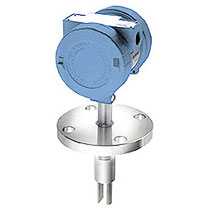Difference between revisions of "Viscosity Meters"
(Created page with "Category:Meters, Gauges{{Knoppen}} <noinclude><!------------------------------------------------ * READ THIS FIRST * Only edit this page if you can improve the content. ...") |
|||
| Line 7: | Line 7: | ||
* Please start editing this page after the /noinclude | * Please start editing this page after the /noinclude | ||
* -------------------------------------------------></noinclude> | * -------------------------------------------------></noinclude> | ||
[[File:Viscosity meter.jpg|thumb|right|Viscosity Meters]] | |||
'''Viscosity Meters''' are devices used for measuring viscosity of fluids at atmospheric or at other temperatures. Viscosity meters or viscometers operate on two main technologies, namely glass viscometer and rotational viscometer. In glass viscometer, a calibrated capillary tube is used in which a liquid is passed at a controlled temperature at a specified time period. They measure the rate of flow through a small orifice for a fixed volume of fluid at a controlled temperature. In rotational viscometer torque required is achieved by immersing the spindle inside the fluid and rotated at constant speed. The torque is directly proportional to the viscosity of the fluid. Viscometer not only handles Newtonian fluids, whose viscosity are independent of shear rate but also measures non-Newtonian fluids, where fluids are sheared at greater rates. | |||
==Features== | |||
Following are the features of viscosity meters: | |||
* Temperature compensation devices | |||
* Data storage devices like hard or floppy drive | |||
* Display devices (analog meters, numeric and alphanumeric digital displays, CRT, and LCD) | |||
==Applications== | |||
Viscosity meters have a varied range of applications in oil and gas, fluid processing, process control, chemical and pharmaceutical industries where highly viscous liquids are involved in their processes. They are also used for laboratory purposes for different kind of fluids and also for sanitary applications. | |||
Latest revision as of 10:17, 25 December 2012
Viscosity Meters are devices used for measuring viscosity of fluids at atmospheric or at other temperatures. Viscosity meters or viscometers operate on two main technologies, namely glass viscometer and rotational viscometer. In glass viscometer, a calibrated capillary tube is used in which a liquid is passed at a controlled temperature at a specified time period. They measure the rate of flow through a small orifice for a fixed volume of fluid at a controlled temperature. In rotational viscometer torque required is achieved by immersing the spindle inside the fluid and rotated at constant speed. The torque is directly proportional to the viscosity of the fluid. Viscometer not only handles Newtonian fluids, whose viscosity are independent of shear rate but also measures non-Newtonian fluids, where fluids are sheared at greater rates.
Features
Following are the features of viscosity meters:
- Temperature compensation devices
- Data storage devices like hard or floppy drive
- Display devices (analog meters, numeric and alphanumeric digital displays, CRT, and LCD)
Applications
Viscosity meters have a varied range of applications in oil and gas, fluid processing, process control, chemical and pharmaceutical industries where highly viscous liquids are involved in their processes. They are also used for laboratory purposes for different kind of fluids and also for sanitary applications.
